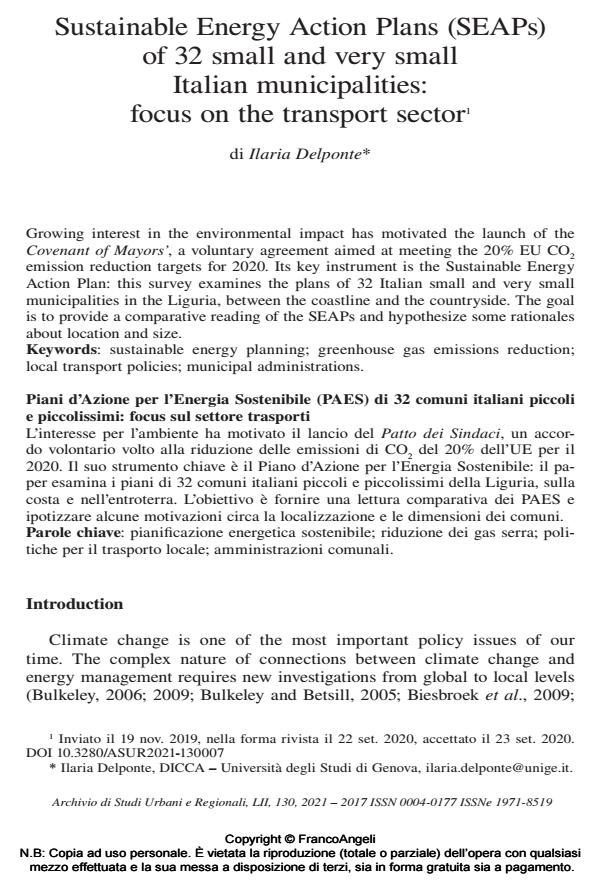Sustainable Energy Action Plans (SEAPs) of 32 small and very small Italian municipalities: focus on the transport sector
Titolo Rivista ARCHIVIO DI STUDI URBANI E REGIONALI
Autori/Curatori Ilaria Delponte
Anno di pubblicazione 2021 Fascicolo 2021/130
Lingua Inglese Numero pagine 22 P. 118-139 Dimensione file 217 KB
DOI 10.3280/ASUR2021-130007
Il DOI è il codice a barre della proprietà intellettuale: per saperne di più
clicca qui
Qui sotto puoi vedere in anteprima la prima pagina di questo articolo.
Se questo articolo ti interessa, lo puoi acquistare (e scaricare in formato pdf) seguendo le facili indicazioni per acquistare il download credit. Acquista Download Credits per scaricare questo Articolo in formato PDF

FrancoAngeli è membro della Publishers International Linking Association, Inc (PILA)associazione indipendente e non profit per facilitare (attraverso i servizi tecnologici implementati da CrossRef.org) l’accesso degli studiosi ai contenuti digitali nelle pubblicazioni professionali e scientifiche
Growing interest in the environmental impact has motivated the launch of the Covenant of Mayors’, a voluntary agreement aimed at meeting the 20% EU CO2 emission reduction targets for 2020. Its key instrument is the Sustainable Energy Action Plan: this survey ex-amines the plans of 32 Italian small and very small municipalities in the Liguria, between the coastline and the countryside. The goal is to provide a comparative reading of the SEAPs and hypothesize some rationales about location and size.
L’interesse per l’ambiente ha motivato il lancio del Patto dei Sindaci, un accordo volontario volto alla riduzione delle emissioni di CO2 del 20% dell’UE per il 2020. Il suo strumento chiave è il Piano d’Azione per l’Energia Sostenibile: il paper esamina i piani di 32 comuni italiani piccoli e piccolissimi della Liguria, sulla costa e nell’entroterra. L’obiettivo è fornire una lettura comparativa dei PAES e ipotizzare alcune motivazioni circa la localizzazione e le dimensioni dei comuni.
Parole chiave:Pianificazione energetica sostenibile; riduzione dei gas serra; politiche per il trasporto locale; amministrazioni comunali.
Ilaria Delponte, Sustainable Energy Action Plans (SEAPs) of 32 small and very small Italian municipalities: focus on the transport sector in "ARCHIVIO DI STUDI URBANI E REGIONALI" 130/2021, pp 118-139, DOI: 10.3280/ASUR2021-130007